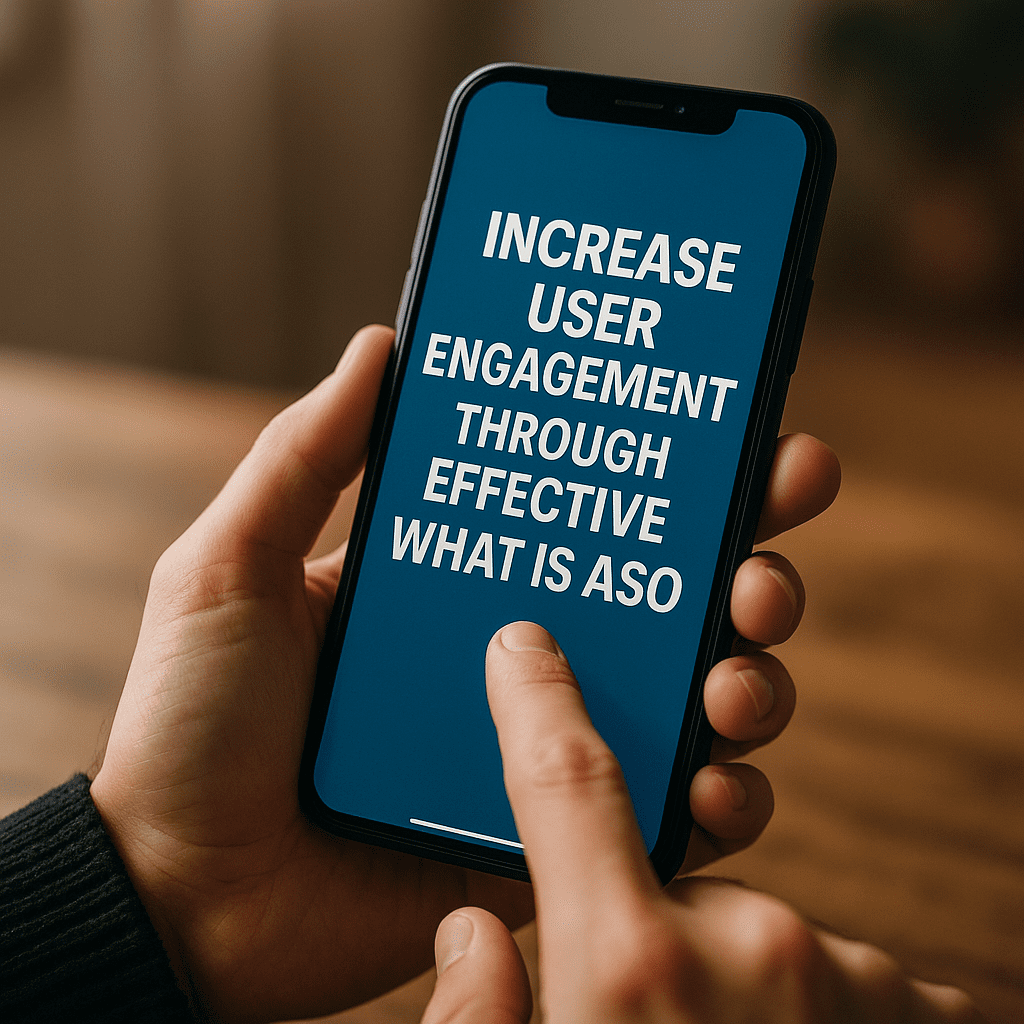
Increase User Engagement Through Effective ASO: Insider Techniques for 2025
In today’s saturated app stores, driving organic installs and meaningful engagement requires more than just polished visuals and basic keyword stuffing. App Store Optimization (ASO) has evolved into a nuanced discipline that sits at the intersection of store algorithms, user psychology, and data-driven experimentation. In this comprehensive guide, we unpack advanced yet practical ASO tactics—often overlooked by mainstream strategies—that mobile app marketers, growth managers, and performance teams can deploy immediately to capture market share and cultivate an engaged user base.
Quick Insight: A metaphorical representation of how what is aso creates pathways for users to discover and engage with mobile apps.
Understanding ASO as the Growth Engine
What Is ASO?
App Store Optimization is the strategic process of refining your app’s metadata, creative assets, and user experience signals to rank higher in store search results and convert more impressions into installs. Unlike web SEO, ASO demands alignment with the unique algorithms of Google Play and the Apple App Store, which weigh factors such as relevance, engagement, retention and quality signals. By optimizing for these criteria, you enhance your app’s visibility, attract qualified users, and ultimately reduce your user acquisition costs.
Why ASO Matters for Mobile Growth
Organic discovery still accounts for over 60% of installs in mature app categories. A robust ASO strategy not only generates a steady stream of high-intent users but also compounds over time—with each positive review, update, and ranking improvement reinforcing your app’s authority. For growth teams, this translates into measurable ROAS, higher retention cohorts, and the freedom to reallocate paid budgets toward experimentation or new channel testing.
Advanced ASO Techniques Often Overlooked
Semantic Keyword Sets for Contextual Relevance
Moving beyond single keywords, advanced ASO leverages semantic clusters—groups of related search terms that users deploy in natural language. By analyzing search suggestions, competitor metadata, and in-app review language, you can construct a matrix of primary, secondary and long-tail keywords. Integrate these clusters across your title, subtitle (iOS), short description (Android) and full description to signal both breadth and depth of relevance to store algorithms.
- Primary Keywords: High-volume, core descriptors (e.g., “photo editor,” “budget tracker”).
- Secondary Keywords: Related functionalities (e.g., “filters,” “expense report”).
- Long-Tail Phrases: User-centric queries (e.g., “best photo editor for beginners,” “app to track monthly bills”).
Regularly refresh your metadata based on ranking reports from tools and the Admiral Media ASO dashboard to capture seasonal trends and emergent search behavior.
Visual Storytelling Beyond Screenshots
While screenshots remain critical, top-performing apps now employ dynamic visuals—lightweight promo videos, cinemagraphs, and story-led graphics that illustrate core user flows in under 10 seconds. Apple’s App Store allows 30-second app previews, and Google Play supports video banners. Tailor each asset to highlight your unique value proposition (UVP) in a mobile-first narrative:
- Problem → Solution: Show users their pain point (e.g., slow commute) and your app’s remedy (e.g., real-time carpool map).
- Feature Focus: Spotlight one high-impact feature per frame or clip, with concise overlay text.
- Brand Consistency: Maintain a consistent color palette and typography aligned with your marketing channels.
Run qualitative tests on user panels or leverage platform-native A/B testing (Google Play Experiments, Apple Product Page Optimization) to validate which visual narrative drives the strongest install-to-open rate.
Feature Graphic Optimization on Google Play
The Feature Graphic on Google Play is a prime real estate for capturing attention in category browse, editorial placements and store promotions. Many marketers reuse their icon or splash screen—missing out on strategic messaging. Instead:
- Use high-contrast layouts with a single call-to-action (e.g., “Plan Meals in 5 Min”).
- Incorporate social proof—“Over 1M Active Users”—to establish credibility.
- Localize graphics for key markets to resonate with cultural preferences.
Monitor performance shifts post-update using the Google Play Console’s “Store performance” report to quantify incremental lifts in impressions and installs.
Deep Linking and On-Metadata Interlinking
Deep links enable your app store listing to direct users to specific in-app content (e.g., product pages, onboarding flows). When combined with indexed content in the store description (structured as “Open now: food recipes →”), you create a frictionless path from discovery to first value. Benefits include higher conversion rates and improved retention, as users land directly on the feature that attracted them.
Behavioral Signals and Store Listing Experiments
Store algorithms reward listings that drive positive behavioral signals—higher tap-through rates (TTR), install-to-open ratios and session durations. Beyond static A/B tests, advanced marketers run multivariate experiments that mix metadata changes with push campaigns or paid creatives, observing how off-store activity influences store performance. By correlating campaign spend, creative variations, and organic uplift in a unified analytics framework, you can isolate true lift and optimize more holistically.
- Align paid user segments with store listing variants to gauge cross-channel synergies.
- Use first-party data (session length, retention cohorts) to inform which features to spotlight in metadata.
- Implement data pipelines between your analytics platform and ASO tools to automate hypothesis validation.
Building a Holistic ASO Strategy
An advanced ASO playbook doesn’t stop at the store. It integrates with your overall user acquisition, retention and referral loops. Key steps to build a unified approach:
- Cross-Functional Alignment: Include product, UX, analytics and creative teams in quarterly ASO planning sessions.
- Release Cadence: Coordinate metadata updates with feature launches and major marketing campaigns to amplify visibility.
- Localization Framework: Develop a tiered roadmap—start with top-performing markets, then expand to long-tail geographies with high growth potential.
- Review & Reputation Management: Integrate in-app prompts at moments of peak satisfaction, and route critical feedback directly to product owners for rapid resolution.
Measuring and Iterating: KPIs and Tools
To ensure your ASO efforts deliver sustained returns, establish a clear measurement framework around three pillars:
- Discovery Metrics: Search rankings, impressions, tap-through rates.
- Conversion Metrics: Install rate, open rate, first-session completion.
- Engagement & Retention: Day-1, day-7 retention cohorts, session length, in-app events.
Recommended tools and integrations:
- App Store Connect & Google Play Console: Native A/B testing, performance reports.
- Admiral Media ASO Suite: Automated keyword tracking, competitive benchmarking, localized keyword suggestions—learn more.
- Analytics Platform: Connect your analytics (e.g., Firebase, Amplitude) to capture post-install behavior and feed insights back into your listing experiments.
Schedule bi-weekly reviews of your ASO dashboard to spot shifts in ranking trends, seasonal traffic surges, or competitor moves. This cadence ensures you stay proactive rather than reactive in a fast-moving app ecosystem.
Conclusion: Catalyzing Engagement through ASO Mastery
Effective ASO in 2025 demands a blend of creativity, data science and cross-team collaboration. By harnessing semantic keyword sets, dynamic visual storytelling, deep linking strategies and robust experimentation frameworks, mobile app marketers and growth teams can unlock sustained organic growth and superior user engagement. Start integrating these advanced tactics into your roadmap today—iteratively test, measure impact, and iterate—to transform your app store listing into a high-conversion growth engine.
For further insights and enterprise-grade ASO resources, explore the Admiral Media ASO knowledge center and stay ahead as store algorithms evolve.
